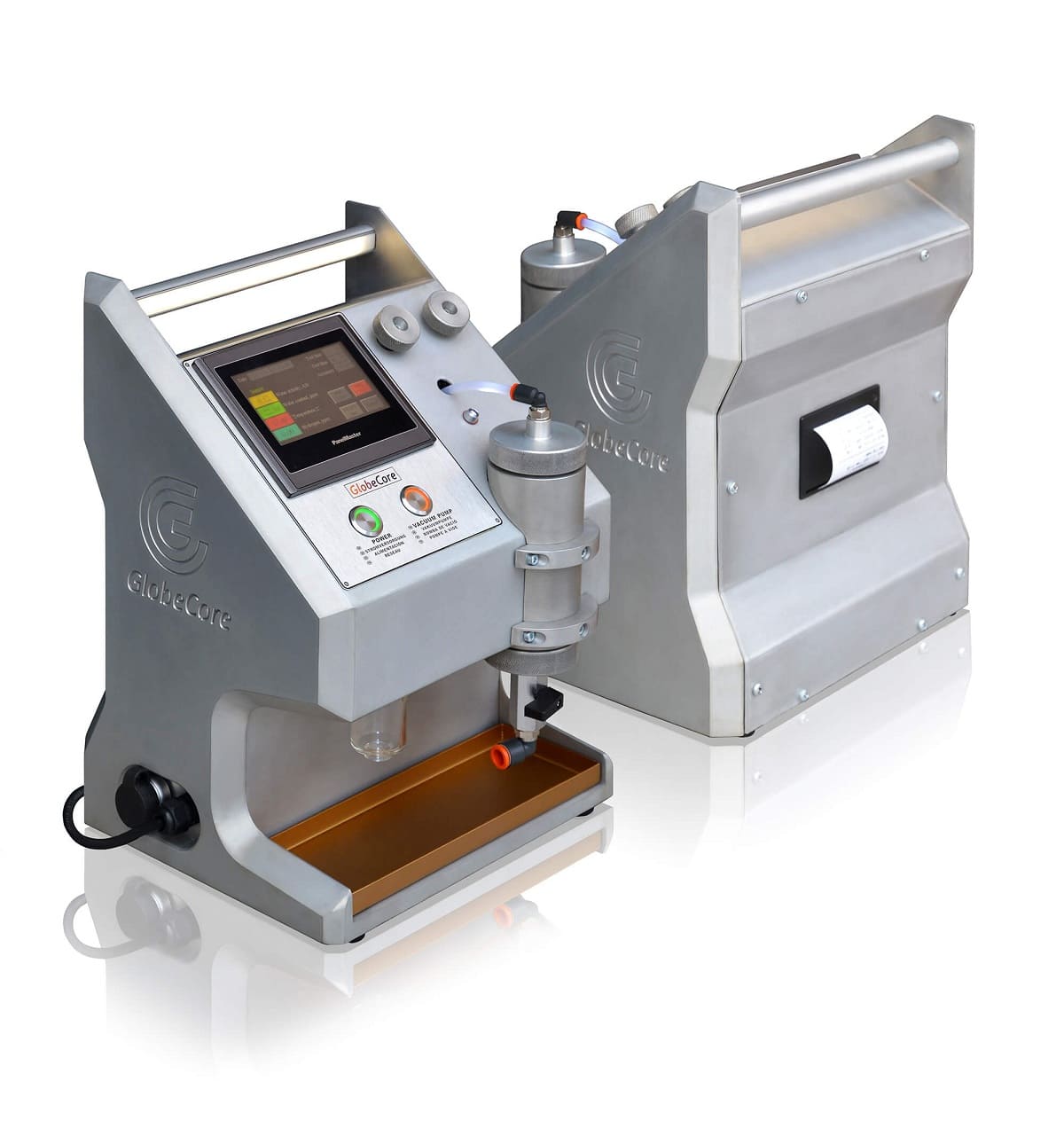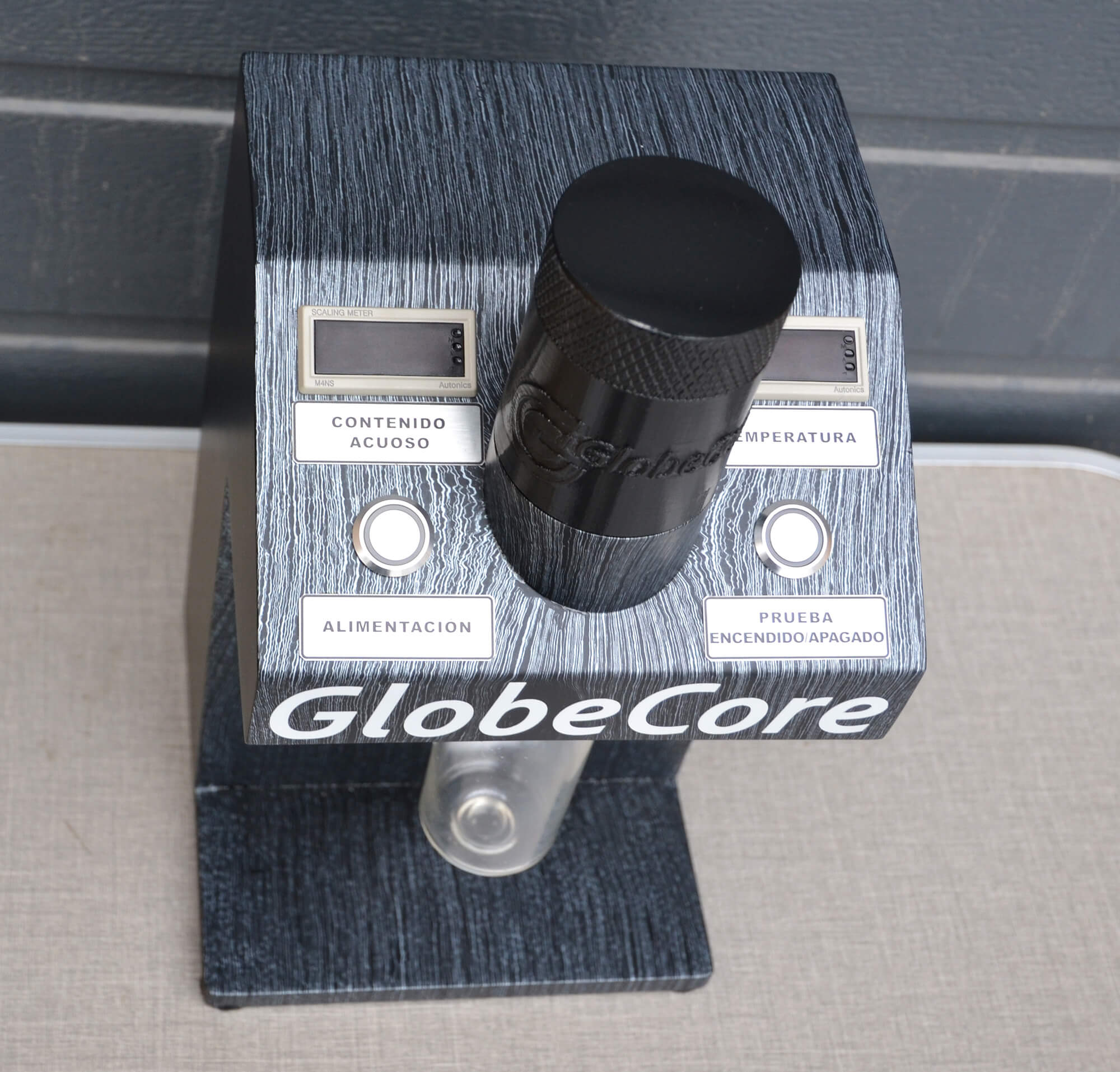Transformer oil tester is a device that measures one or more parameters of an oil in order to determine its current state. The market for such equipment is large, so in this article we will focus only on the basic parameters and solutions that GlobeCore offers to determine them.
Also note that some types of transformer oil analysis help to diagnose defects developing in the transformer and particularly interest companies that operate and maintain transformers.
How to test transformer oil
Depending on the volume of transformer oil tests are divided into three types:
- tests for electrical strength (measurement of breakdown voltage and moisture content, visual determination of the presence of mechanical impurities);
- abbreviated analysis of transformer oil samples, which, besides electrical strength tests, also includes the determination of acid number, water-soluble acid content, flash point and oil color;
- complete analysis of transformer oil. This type of test comprises a shortened analysis and determination of additional parameters and characteristics:
- tangent of the dielectric loss angle;
- sodium sample;
- stability against oxidation;
- moisture content and content of mechanical impurities (in quantitative form).
General rules for sampling for testing transformer oil
In order to get a reliable result, it is not only the accuracy class of the transformer oil tester that is used for sample analysis that is important. The quality of the sample itself is also important. The same oil that is in the transformer must be tested. Therefore, when collecting and transporting samples, we need to follow certain rules.
To ensure that the test results are typical, oil samples must be taken in the same place, and this place is marked for technical personnel. Sampling is performed in a place where the oil is static. With transformers filled with mineral oils, synthetic dielectric liquids or silicone oils, sampling is performed from the bottom of the transformer tank, since the specific gravity of such liquids is less than one and the water goes down.
Also, when sampling, you need to consider meteorological conditions. For electrical equipment, the ideal conditions are:
- temperature 95 °F (35 °C) or higher. If the sample is taken at a temperature below 32 °F (0 °C), it is not recommended to determine the moisture content in it, and other parameters that depend on the moisture content;
- relative humidity of 0%. Conditions where humidity exceeds 70% should be avoided;
- the lack of wind. If the weather is windy, dust and debris may enter the sample.
After sampling, the samples are stored in a dark and cool place, and the dishes are opened only before the tests begin.
Frequency of transformer oil testing
For transformers with a voltage of up to 35 kV, it is recommended to test the transformer oil during the first month of operation (three times in the first half of the month and twice in the second), and in the future – at least once every four years and during complex tests of transformers.
For transformers of 110 kV and higher, transformer oil tests are carried out under the requirements.
Testing of power transformer oil for moisture content
Moisture content is an important indicator of the quality of transformer oil, as it affects the insulation properties. The increased moisture content reduces the electrical strength and leads to oil breakdown. Therefore, the amount of moisture must be controlled before filling the oil and during operation of the transformer. Excessive moisture content affects not only the properties of the oil, but also destroys the cellulose insulation. The most dangerous for the transformer is water, which is in an emulsion form.
GlobeCore has developed the TOR-1 transformer oil tester to determine the moisture content even in the smallest amounts. Its major advantage is its small size and weight, which allows you to use the device for rapid analysis of oil samples directly near the transformer. Measurements are provided by the contact of the oil with the capacitive sensor. The operation of the TOR-1 does not require the use of consumables and toxic reagents, which makes its use even more convenient.
Breakdown voltage
Breakdown voltage – the maximum voltage that can be applied to the transformer oil without the occurrence of an electrical breakdown. This is a critical parameter for transformer oil, as it must provide insulation at high electric fields. Any significant reduction in the breakdown voltage shows that the oil can no longer perform its major function well.
To measure the breakdown voltage, GlobeCore has developed the bdv TOR-80 transformer oil tester. It is a compact portable device that can also analyze oil samples directly near the transformer and has an error in measuring the breakdown voltage of no more than ± 1%. Among other advantages of the TOR-80 transformer oil tester, it is worth highlighting:
- ability to work offline or online with transferring results to a personal computer, create a local database, generate reports, plot graphs and print results;
- instantaneous (4 microseconds) shutdown of the test voltage when a breakdown occurs;
- automated measurement of breakdown voltage up to 80 kV.
Tangent of the dielectric loss angle
Another important parameter of transformer oil is the tangent of the dielectric loss angle. It is sensitive to various contaminants in the oil: colloidal particles, oil aging products and solid insulation. For fresh oils, the tangent of the dielectric loss angle can serve as an indicator of the quality and purification at the manufacturing plant. For oil that serves, the dielectric loss tangent can estimate contamination and aging. The advantage of determining this parameter is the ability to detect minor changes in the properties of the oil, even with a tiny contamination, which cannot be determined by chemical control methods.
As with moisture content and breakdown voltage, the TOR-3 Tan Delta transformer oil tester has been developed by GlobeCore to determine the tangent of the dielectric loss angle. It is also a compact portable device that can be used both in the laboratory and for testing oil samples near the transformer immediately after sampling. This device allows you to quickly determine the tangent of the dielectric loss angle while maintaining accuracy. The measurement process is automated, it is possible to save the results and print them on a printer.
Acid number
Transformer oil under the influence of high temperature and oxygen is oxidized. This process is sped up by small metal particles in the oil. Carboxylic acids are formed in the oil, which leads to an increase in the acid number. In the future, it increases, which is associated with the appearance of sludge. An increase in the acid number is often accompanied by a decrease in the dielectric strength of the oil and an increase in humidity. In addition, the increase in acidity increases the destructive effect of paper insulation.
The acid number a criterion for aging of transformer oil and allows it to be regenerated in time.
Usually, the acid number is determined by chemical methods, in particular, titration of acidic compounds of transformer oil with an alcoholic solution of potassium hydroxide in the presence of an indicator. The indicator is used to determine the titer of a potassium hydroxide solution.
Unsatisfactory is the quality of the oil, which corresponds to an acid number exceeding the value of 0.1 mg KOH/g.
Analysis of gases dissolved in oil

The analysis of gases dissolved in oil has great diagnostic information. Knowing what gases are currently contained in the oil, and the ratio of concentrations of these gases, you can determine the defects developing in the transformer.
To perform the analysis, it is necessary to take oil samples, deliver them to the laboratory, extract gases from the oil, and then determine their qualitative and quantitative composition. These processes take a long time, so it is more convenient to take measurements near the transformer immediately after sampling. At the same time, to assess the state of the transformer, you can use the content of hydrogen, which is formed in the oil one of the first already at a temperature of 150 degrees Celsius, and is 59% of all gases released during the decay of oil molecules.
GlobeCore has developed the TOR-2 transformer oil tester for high-precision determination of hydrogen and moisture content in mineral and essential oils.
Thus, timely analysis of oil samples is an integral part of a comprehensive program to maintain the reliability of transformers. The transformer oil tester also allows you to:
- determine the optimal time for the output of the transformer for repair;
- reduce the financial costs of repairing transformers;
- avoid sudden power outages;
- extend the service life of transformers.





